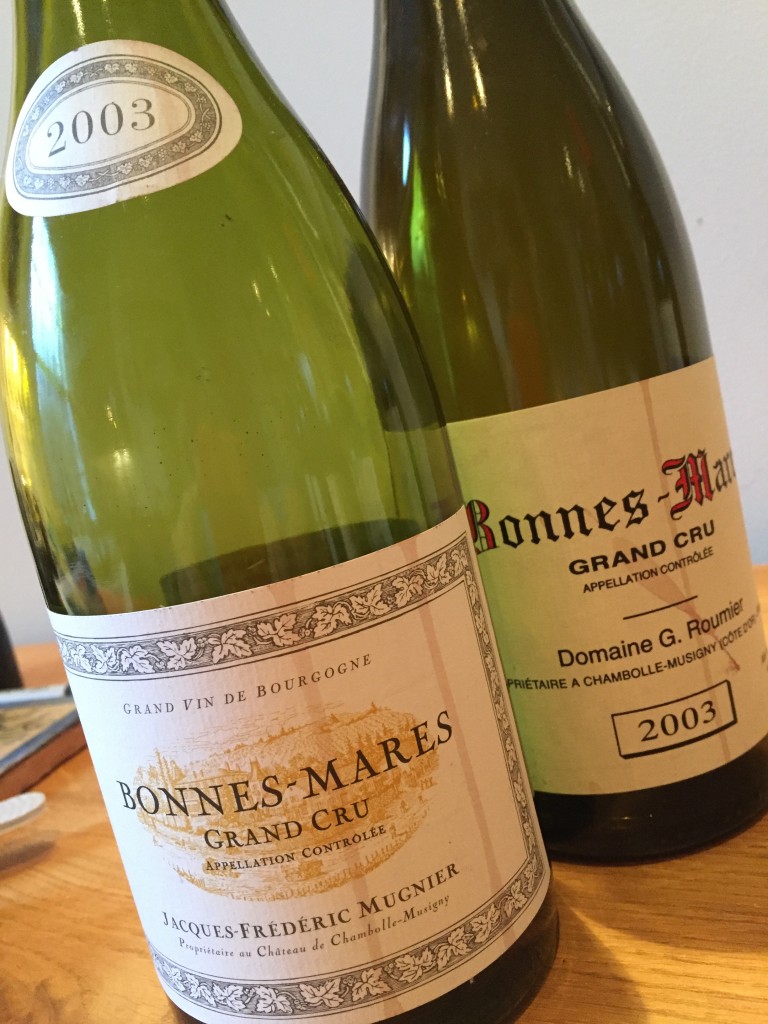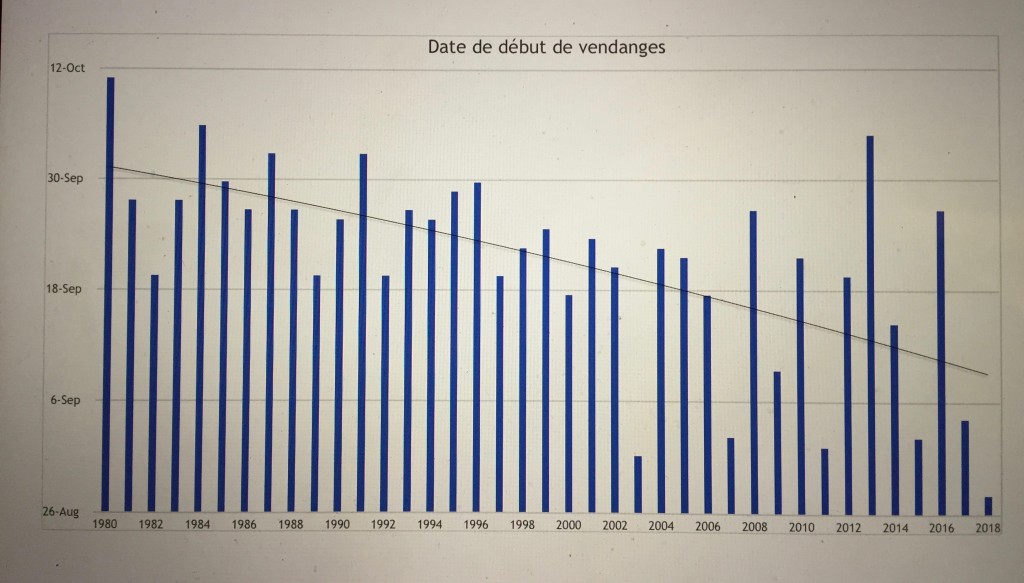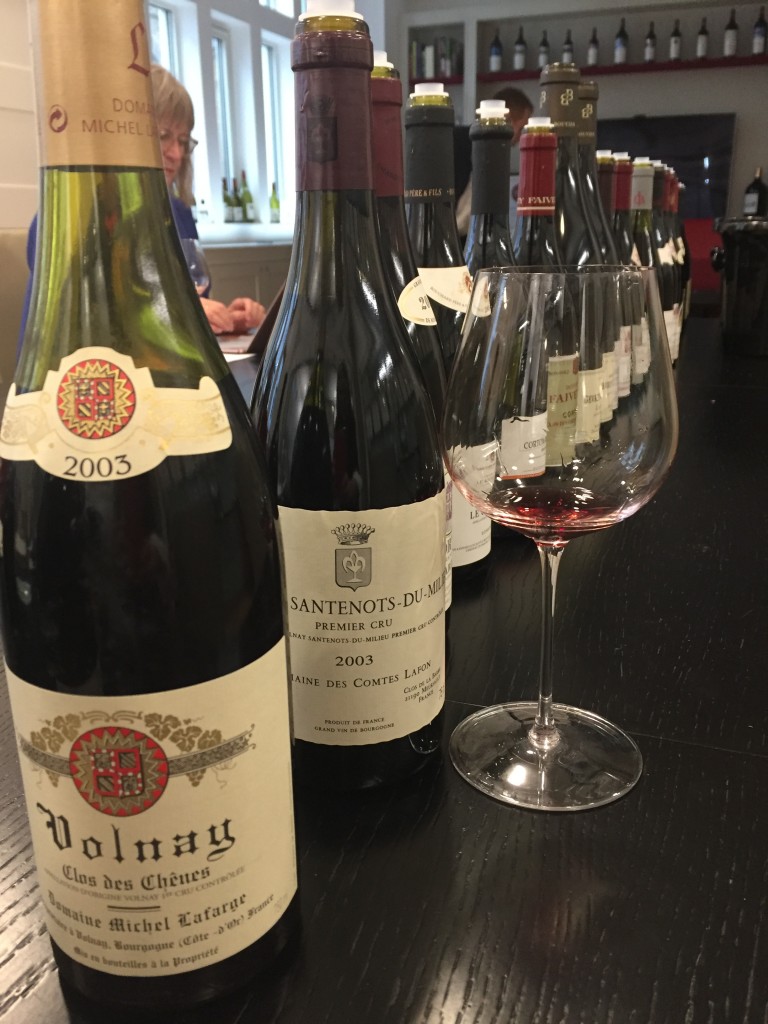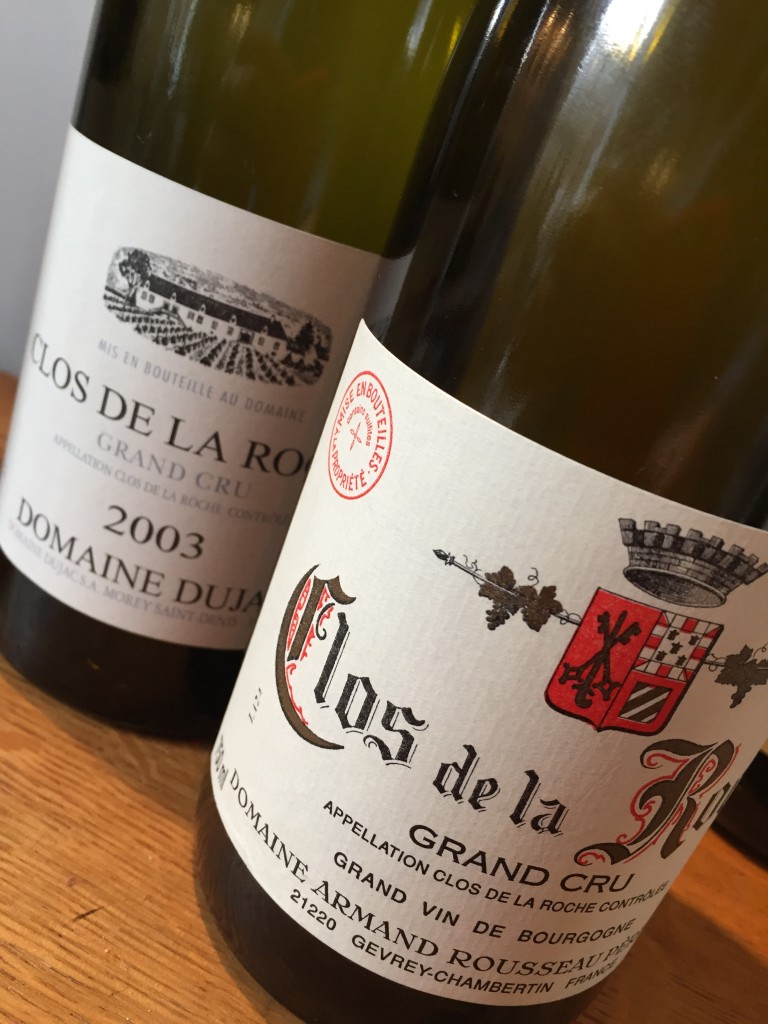Some Like it Hot

This ‘briefing,’ which accompanies the Time to Mature tasting of 2003s, takes a brief look at the changes occurring this millennium, with frequent hot vintages and early harvests.
Pinot Noir in particular is a sensitive variety, considered unsuited to hot climates. What then of its future in Burgundy? While Chardonnay is much more robust to climate variation, the variety is merely a conduit to express terroir in Burgundy. Hot vintages threaten to mask terror and compress the appellation hierarchy. 2003 was the most extreme vintage this millennium, harvested from mid August, and as such it is interesting to consider how the 2003s have aged.
This century we have seen a number of departures from the typical growing season. Not least, early bud break. This puts vines at risk of frost damage which happened so devastatingly in 2016. Hot summers accompanied by periods of low rainfall are becoming more frequent. As are early harvests. The decision of when to pick becomes even more difficult as sugars rise, acidity declines and tannins are not ripe.
In Chambolle Frédéric Mugnier has recorded the date he began harvesting from 1980 to the present day. with his information he has complied his chart below.

This clearly demonstrates a trend towards earlier vintages. It also shows the wide disparity of the date to begin the harvest from as early as August until October. Harvest started in October in 2013. An October harvest was quite common in previous centuries, but in recent decades, a September harvest start is most typical. Frédéric’s chart shows only four harvests – in Chambolle – the past 39 years which started in October – 1984, 1987, 1991 and 2013.
The historian Thomas Labbé has gathered data to trace harvests in Beaune back hundreds of years. Together with some colleagues from Université de Bourgogne, Switzerland, Germany they have shown an abrupt shift in harvest date since 1988.
Benjamin Bois, a climate / viticulture specialist, co-author of this study remarks, “October was the triggering month for harvest 4 years of of 10 until the 20th century. Since the year 1988, when a significant shift towards a warmer climate in Europe as been evidenced by numerous research, harvest in Beaune started in October only once. It was during 2013.”
“Moreover our homogenized harvest dates data set stretching back to 1354 show that harvest began in August only seven times since the past 664 years. Three of them occured in the 21st century!”
If we consider that 2003 was the most extreme vintage this century, it gives us hope for less extreme vintages. In 2018 and 2019 there were hot peaks of temperature while in 2003 the hot temperature was more sustained and remained hotter at night. August of 2003 was very dry. It proper drought during the summer. In 2003 crop was very small, due to the spring frost, exacerbating the effect of the season on the resulting wine.
In 2018 in particular there was plenty of rain early in the growing season (in June) to provide sufficient water reserves to last through the summer, while in 2019 although there was a little rain in during the summer, there was more problems with shrivelling and grapes burning as experienced in 2003.
The 2018s are higher in alcohol than 2003, probably as the vines in 2003 shut down and stopped photosynthesising, while the 2018 the vines were a veritable sugar factory. Higher yields saved the day in 2018. If they were smaller, it would have been heavier. However both vintages have low acidity and a high pH.
I was interested to see how warmer terroir fared in 2003. Some of the best vineyards are on the most exposed sites, nicely positioned on a gentle slope to catch the sun. The hot situation is exacerbated in vineyards with thin top soils. Here the vines can suffer in relentless heat. This could suggest that with global warming, some of the finest appellations in Burgundy may become too hot to be remain the best sites.
Certainly for me Chambolle is particularly at risk and Volnay. These are the most delicate and therefore the most ‘fragile’ of the villages. In the hot 2015 vintage I found many Chambolle too sweet and in 2018 they can be very exotic. It depends on picking dates. Volnay with its beautifully exposed slope and limestone is similarly vulnerable, unlike neighbouring Pommard with its clay and cold breezes.
However the saving grace may be old vines. Deep roots can certainly help. Producers reported that in 2003 the vineyards that suffered hydric stress were often younger vines (under 25 years old) and this was the case again in 2018.

In Volnay, Domaine Michel Lafarge, Clos des Chênes is well exposed on the slope with thin top soil over limestone. In 2003 Lafarge has produced an elegant Volnay with proper mineral intensity and length, albeit a little lacking in the mid palate. Given the vineyard, this elegant result in 2003 is most likely due to old vines and a long history of good vineyard husbandry.
Lafon’s Santenots was also very good, less mineral, but with more depth and density mid palate and an impressive freshness. Given the vine age and the biodynamics, in other words an equal playing field of old vines and good work, the deeper soils have given it the edge.
When considering recent vintages with the results of 2003, it is also important to bear in mind that the approach in the vineyard has changed in the past 15 year. Today there is more awareness and more care devoted to the issues related to hot summers in canopy management and fruit shading. There are more domaines working organically and biodynamically and some observe this makes their vineyards more resilient.
There are significant changes in the winery. Careful selection – optical sorting tables, more attention to detail in the area, removing dried, shrivelled berries has a profound effect on quality. Extraction is gentle. In 2018 many turned from pigeage to remontage and did not work the vats every day. There was a more widespread use of whole bunch in 2018 to boost a sense of freshness and absorb some alcohol even at the expense of a little acidity.
Here are a few comments from the producers.
Nicolas Rossignol of Domaine Rossignol-Trapet whose vineyards are certified biodynamic and was among the first domaine to convert. “The grapes were dry and burnt in 2003 by the heat and the sun. We did not have this in 2018. In the winery things have changed – we did pigeage in 2003 which we don’t do now and we use whole bunch now which we did not do in 2003.”
“Also our vines have changed – in 2003 we had only half of the domaine in bio-dynamics and in 2004 we converted everything – for me this is a very big difference. The vines have more resilience now – having their history of the bio-dynamics – more resilience to drought, rain – hot or cold weather. We have seen this in 2019 as well.”
“However 2003 is lasting well, more than we thought. 2018 will last better – or differently – it is fresher than the 2003s. It will be fresher after 10-15 years.”
Cyrielle Rousseau “It was warmer in 2003 in the summer, and the harvest was warmer too. The canicule was at the end of July in 2018 and this finished off the maturity, but in 2003 it was so fruity and rich and only now it works with the tannins and the acidity. Only coming together now. The fruit does not overcome the wine in 2018 as it did in 2003. 2003 at the same stage was heavy…only now does 2003 become awesome.”
François Millet cellar master of Domaine Comte de Vogué, ‘In 2003 the heat and drought was sudden in August and the vines were not conditioned the way they are in 2018 and 2019.’
So there may be another cause for optimism – conditioning – some of the growers I have spoken with believe their vines are becoming more conditioned to the extremes. 2013 was harvested in October while harvesting in 2007, 2011, 2017, 2018 and 2019 began in August or early September.
Tasting the 2003s I feel confident in the ageing capacity of recent hot (but better balanced) vintages which are now in barrel. As Christophe Roumier remarks “In 2003 the wines have become more tense and precise as they have aged.”
I am heartened by the growers observation at that Pinot Noir is adapting to the warmer vintages. And tasting the 2003s it is a relief to see that the appellation hierarchy, which may appear compressed when the wines are young, does become apparent with age and the signature of the terroir also comes through with time. Without a good refection of terroir wine lovers could, with justification, turn to Pinot Noir from California or Australia where great Pinot Noir is available at a fraction of the price of Burgundy. Fortunately I believe the 2003 vintage gives us reason to hope for the best for Burgundy.


